Arab Druze village proud to serve in Israel’s war
In the Druze village of Hurfeish, an Arab minority community near Israel’s border with Lebanon, mostly women remain after many men had left to join the front lines of war.
This community in Galilee, brightly adorned with Israeli and Druze flags, has been flush with patriotic fervour since Hamas militants from Gaza smashed through the militarised border with Israel, about 200 kilometres (125 miles) to the south.
The attack left around 1,200 dead on the Israeli side, mostly civilians killed on October 7, according to the latest official Israeli figures.
Israel retaliated with a relentless bombing campaign, alongside a ground offensive in Gaza. More than 11,000 people in the Palestinian territory have been killed, also mostly civilians, according to the latest figures from the health ministry in Hamas-run Gaza.
Far to the north, the unprecedented Hamas attack on southern Israel put Hurfeish on alert, and galvanised it into action to support the troops.
A local factory was refitted to produce military uniforms.
Cars are dotted with blue and white stickers – the colours of the Israeli flag – bearing Arabic script.
Of the 7,000 villagers nearly “80 per cent work in national defence”, in the army, police, intelligence, or penitentiaries, Hassan Rabakh, leader of an armed self-defence group formed after the unprecedented Hamas attack, told AFP.
Hurfeish has even garnered the nickname “Tsahal village”, a Hebrew-language acronym for the Israeli military.
Patrolling the north
The men of Hurfeish help to secure the north, where cross-border exchanges of fire have intensified since October 7, mostly between Hamas ally Hezbollah and Israeli forces.
“We are very close to the Lebanese border, at four kilometres as the crow flies, and in our village we have no fence. So we have two vehicles constantly patrolling”, Rabakh said.
The 20 men in the group drive along winding roads, with the sound of Israeli artillery firing towards southern Lebanon in the background.

The Druze, a religious community descended from a divergent branch of Islam, came to live 1,000 years ago in this mountainous region, divided among three countries roiled by war. They are largely in Syria and Lebanon, but also Israel. Some live in Jordan.
In each country, the Druze chose for religious reasons to commit to the local flag.
“Each Druze is connected by theology to the land that permits him to live there. It is an unshakeable connection”, the political leader of Hurfeish, Mofed Marei, told AFP.
The Druze make up a close-knit community that accounts for two percent of Israel’s population, also including Druze residents of the annexed Golan Heights who largely reject Israeli citizenship.
Overall, Arab Israelis account for around 20 per cent of Israel’s population. Since the Israel-Hamas war began they say they have been living in fear because of increasing hate crimes and attacks.
But even before, rights groups frequently highlighted regular discrimination faced by minority groups, despite their holding Israeli citizenship and in the case of the Druze community service in Israel’s security forces.
Mission ‘to defend’
In his office, Marei, a retired colonel himself, has hung a large oil painting of his brother, Nabih Marei, a senior officer killed in the 1990s.
A local museum is dedicated to the confident-looking fighter who, at the age of 18, reflected that trait by writing directly to the then-defence minister to get into the military unit of his choice.
“For him, it was paratrooper or nothing”, Marei said, smiling. “He opened the path for all of us. Since then we have a range of possibilities.”

This attitude is at the heart of Israeli Druze, who are well-represented within elite units, an Israeli military officer told AFP on condition of anonymity.
According to Marei, more than “40 members of the (Druze) community” have been killed in recent weeks, largely during the military operation to push back the Hamas attackers on October 7.
A total of more than 300 Israeli troops have lost their lives since then, including 42 killed in Gaza since Israel began ground operations in the territory.
Among the Israeli dead is Lieutenant-Colonel Alim Saad.
In the Druze village of Yanuh-Jat, neighbouring Hurfeish, hundreds of women in white veils and men in uniform took part in a religious ceremony last week to honour the soldier killed in clashes on October 9 with Hezbollah militants just a few kilometres away.
“He evacuated his soldiers and went back alone”, his brother Kamal Saad, also a soldier, said with tears in his eyes. “He sacrificed himself so they don’t do to us like they did in the south.”
Alim Saad died fulfilling a mission “to stand up and defend the citizens of Israel,” said his brother.
For the latest news, follow us on Twitter @Aaj_Urdu. We are also on Facebook, Instagram and YouTube.







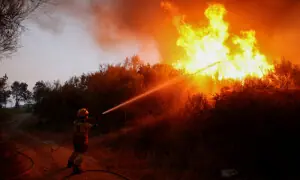
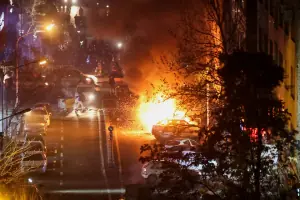
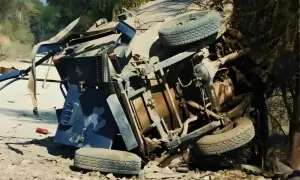
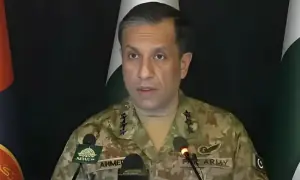

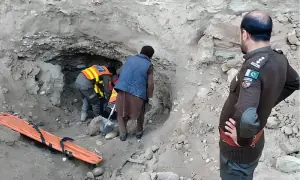
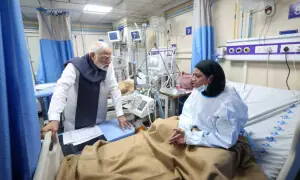


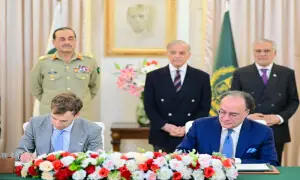
Comments are closed on this story.